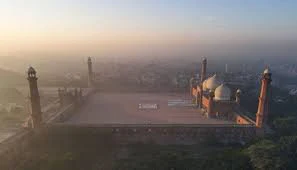Lahore: Battling Severe Smog Issues
0
November 08, 2024
Lahore: Battling Severe Smog Issues
Lahore, Pakistan's second-largest city, has been grappling with severe smog (a mix of fog and pollution) in recent years. The increasing trend of smog has not only impacted the daily lives of its residents but has also led to serious health concerns. In this report, we will discuss the causes, effects, and potential solutions to Lahore's smog problem in detail.
What is Smog?
Smog is a combination of the words "smoke" and "fog." It results from the mixing of various types of pollution particles, such as carbon monoxide, sulfur dioxide, and other chemicals, with fog in the air. In Lahore, smog usually intensifies between October and January.
Causes of Smog in Lahore
1. Vehicle Emissions: The rapid increase in the number of vehicles in the city has led to higher emissions of toxic gases. Older vehicles and substandard fuel also contribute to pollution.
2. Industrial Waste: Industries on the outskirts of Lahore, such as brick kilns and factories, burn coal and other fossil fuels, releasing large amounts of harmful gases into the atmosphere.
3. Burning of Crop Residue: In rural areas of Punjab, farmers burn leftover crop stubble, producing thick smoke that drifts into Lahore, exacerbating the smog problem.
4. Weather Conditions: During winter, the air layer settles closer to the ground, trapping pollutants at low levels and preventing them from dispersing, which increases the intensity of smog.
Effects of Smog on Human Health
Respiratory Diseases: Harmful particles in smog can make breathing difficult, leading to asthma, bronchitis, and other respiratory illnesses.
Eye Irritation: Polluted air can cause eye irritation, itching, and redness.
Cardiovascular Diseases: Smog reduces oxygen levels in the blood, increasing the risk of heart attacks and other cardiovascular diseases.
Vulnerable Groups: People with weaker immune systems, especially children and the elderly, are more affected by smog.
Social and Economic Impacts of Smog
Closure of Educational Institutions: On days with severe smog, the government often closes schools and colleges, disrupting educational activities.
Traffic Accidents: Low visibility due to smog leads to an increase in road accidents.
Economic Losses: Business activities, especially in the construction sector, are hampered due to smog, resulting in economic losses.
Potential Solutions and Recommendations
1. Use of Clean Fuels: The government should adopt policies that promote the use of clean fuels in vehicles and industries.
2. Tree Plantation: Trees play a crucial role in purifying the air, so more trees should be planted in Lahore.
3. Ban on Burning Crop Residue: Farmers should be encouraged to adopt modern agricultural techniques to manage crop residue in an eco-friendly manner instead of burning it.
4. Implementation of Environmental Laws: Strict regulations should be enforced to control industrial pollution.
5. Public Awareness: Media and educational institutions should be mobilized to raise awareness about the effects of smog and ways to prevent it.
Conclusion
Smog in Lahore is a serious environmental issue affecting health, the economy, and the overall quality of life. Addressing this issue requires the combined efforts of the government, industries, and the public. It is imperative that we take serious actions to protect our environment, ensuring a cleaner and healthier atmosphere for future generations.
This article delves into the root causes of Lahore's smog problem and proposes actionable measures to mitigate it. Implementing these steps can help us combat this environmental crisis effectively.
Tags










